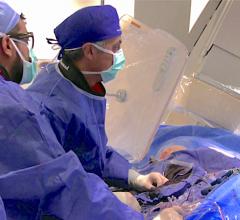By Dave Fornell, editor
I have watched a trend in medical technology grow from a small ripple a couple years ago into what I expect will be a tidal wave in 2014 due to growing concern over patient radiation dose levels from medical imaging. Use of radiation dose monitoring software came to the forefront when California, followed by Texas, created laws requiring medical facilities to record the amount of exposure patients receive from things like computed tomography (of which cardiac exams are among the highest dose levels used) and angiography. Adoption of this software will be further accelerated by new Joint Commission standards released in December 2013, which starting in mid-2014 requires the use of radiation dose monitoring software as part of its accreditation.
The Joint Commission’s view is that it is not possible for a medical facility to know exactly how it is doing in regards to patient radiation safety or use of “as low as reasonably achievable” (ALARA) dosing principles if it does not track the data. The software enables hospitals to build a more robust radiation safety program and re-evaluate its radiation safety practices. Empirical data from these systems offer justification for changing imaging protocols and revision of workflows in both radiology exams and interventional procedures.
In addition to requiring a method for collecting and storing dose data within the patient’s clinical record, the Joint Commission guidelines call for implementation of a robust and dynamic radiation safety program. This includes an engaged radiation safety committee and physicist who regulate radiation safety practices, annual performance evaluations of imaging equipment by a medical physicist, registration and certification of all radiology technologists, and updated protocols for all imaging procedures including the pediatric population.
Additionally, there is a general feeling in radiology that it is only a matter of time before more states legislate the use of radiation dose monitoring software. There is also an expectation that dose level guidelines may eventually be set for all imaging protocols by the American College of Radiology (ACR), based on its national Dose Index Registry. This would be similar to practice guidelines set by organizations such as the American College of Cardiology (ACC), American Heart Association (AHA) or the Heart Rhythm Society (HRS).
I suspect radiation dose monitoring software will be among the ?highlights on the expo floor at radiology and cardiology shows in 2014.
For more on this software, see the article and comparison chart from the March April 2014 issue of DAIC.



 January 31, 2024
January 31, 2024 






